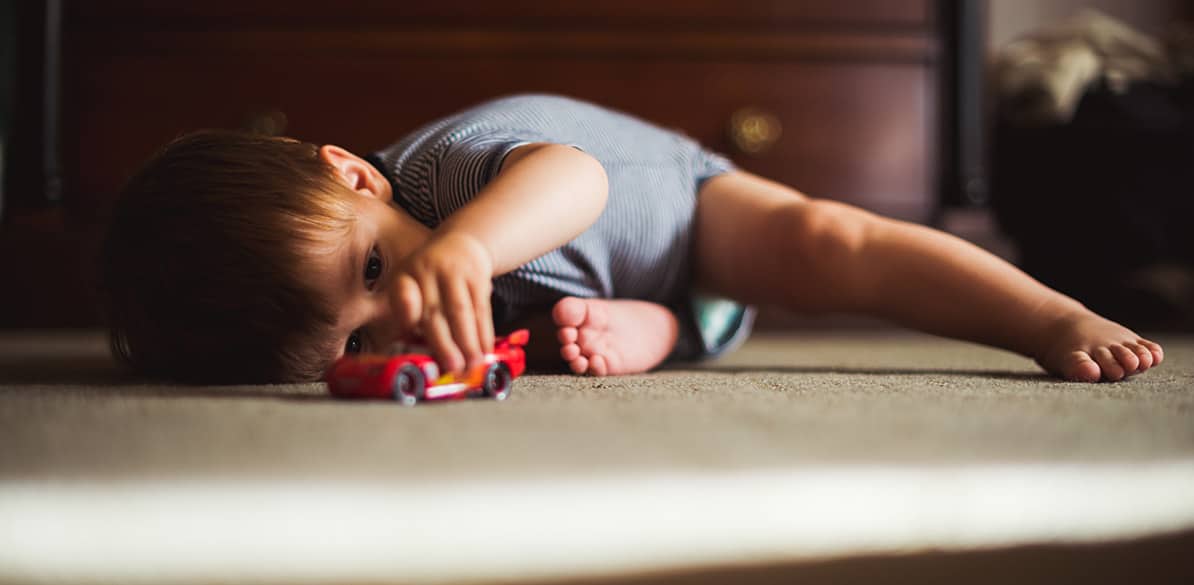What accidents are children exposed to at different ages, and how can they be avoided?

Every day, some 2,300 children around the world die in accidents. Indeed, accidents are the leading cause of death among children aged 5-18 in Europe. The Spanish Pediatric Association and Fundación MAPFRE have drawn up a “Guide for Parents: Prevention of Accidental Injuries in Children (6 MB)” with the aim of publicizing the most frequent risks to which children are exposed and offering a series of recommendations to avoid them.
In Spain, in 2014 alone, 149 children under the age of 15 died as a result of all kinds of injuries. The accidents that cause the most fatalities in children are traffic accidents (23.7%) and drownings (20%), followed by falls (13%) and fire-related incidents, such as burns and smoke inhalation (9%).
The most common type of accident varies according to age group
The above-mentioned Guide examines the most common accidents by age group. It shows that infants under six months are most commonly affected by falls. Most of these falls are from a diaper changing table or the bed. This is followed by injuries from traffic accidents, most of which are caused by not using child restraint systems properly, or not using them at all.
Falls, blows, choking and burns stand out particularly in children between six months and three years old. Why is that? Their greater mobility as they grow up, their tendency to put everything in their mouths, when they start using a walker (which is completely inadvisable), when they play with non-certified toys, and so on.
Intoxications are particularly common in children between one and three years old. This is very often due to swallowing medicines or cleaning products, as well as sleeping in the vicinity of stoves and braziers.
Children between three and six years old sustain injuries more easily as a result of their increased physical activity – going up and down stairs more confidently, running around freely, and showing off in front of adults; while in the 7-12 age group an emphasis needs to be put on avoiding certain behaviors associated with fire, electricity, gas, dangerous games, not using a lift without an adult, doing sport with the right protection, etc.
How to prevent falls, burns and drowning
Perseverance, awareness, supervision, making the child realize the danger of certain behavior… most accidents are avoidable. We have talked on numerous occasions about how to avoid injuries to children in traffic accidents by using the right child restraint system and fitting it properly. We’re now going to look at some recommendations for three of the main kinds of accidents:
Falls
These are the cause of the most common injuries in children. Although most of them do not have serious physical consequences, they need to be prevented as they are the third most common cause of accidental death in the European Union to children under 19 and the leading cause of hospital admittance for accidental injury.
Advice: We recommend you install protective gates on staircases and ensure they are fitted correctly, as well as installing security systems on windows and balconies. In addition, keep any kind of furniture that children could climb on away from the windows and never leave a child alone in a raised location such as a bed, the sofa or the diaper changing table.
We do not recommend the use of walkers, and children should always be secured with safety straps on highchairs, rockers and loungers… In the case of equipment with harnesses, always opt for those with five anchoring points and remove any objects that might cause falls in the home, such as rugs.
You should also stop children from walking on wet floors, use buffers on furniture with sharp edges or corners, and fit some kind of shock absorber on the floor next to the child’s bed or cot.
Burns
Accidents that cause burns are the fourth cause of violent death among children, and are especially common in the 12-24 month age group.
Advice: To avoid electrical burns we recommend installing all sockets in the house with special childproof safety devices. Never handle sockets or wiring in sight of children.
Also, you should always unplug electrical appliances when not using them and avoid the use of multiple sockets and cable extensions.
To avoid sunburn, you should always keep children out of the sun when it is at its strongest (between 10am and 4pm). Make sure they are wearing a high SPF cream and cover very young children up with T-shirts and sun hats. Children should be kept in the shade and babies under six months old must never be left in direct sunlight.
To prevent accidental burns, we recommend the use of smoke detectors. Naturally, children must always be kept away from matches, cigarette lighters, flammable liquids, etc.
To avoid scalds or burns from hot liquids, we recommend that children are kept away from the kitchen so they cannot reach out and grasp the handles of frying pans or saucepans. You also need to take care when bathing them, making sure you check the temperature of the bath or shower water. Remember that water that might feel pleasantly warm to us could cause burns to children’s delicate skin. Never leave a child alone in the bath. You should also remove all electrical appliances from the bathroom and put non-slip stickers on the base of the bathtub.
Drowning
Every hour of every day, some 40 people lose their lives through drowning. Furthermore, drowning is one of the top ten causes of death in people aged under 24 in every region of the world.
Advice: Children should be supervised at all times while they are in the water or playing close to it; always choose safe places to bathe; always find out about and abide by safety instructions; learn how to perform First Aid and cardiopulmonary resuscitation, and teach children that they must never bathe alone and always use swimming pools and beaches responsibly.
